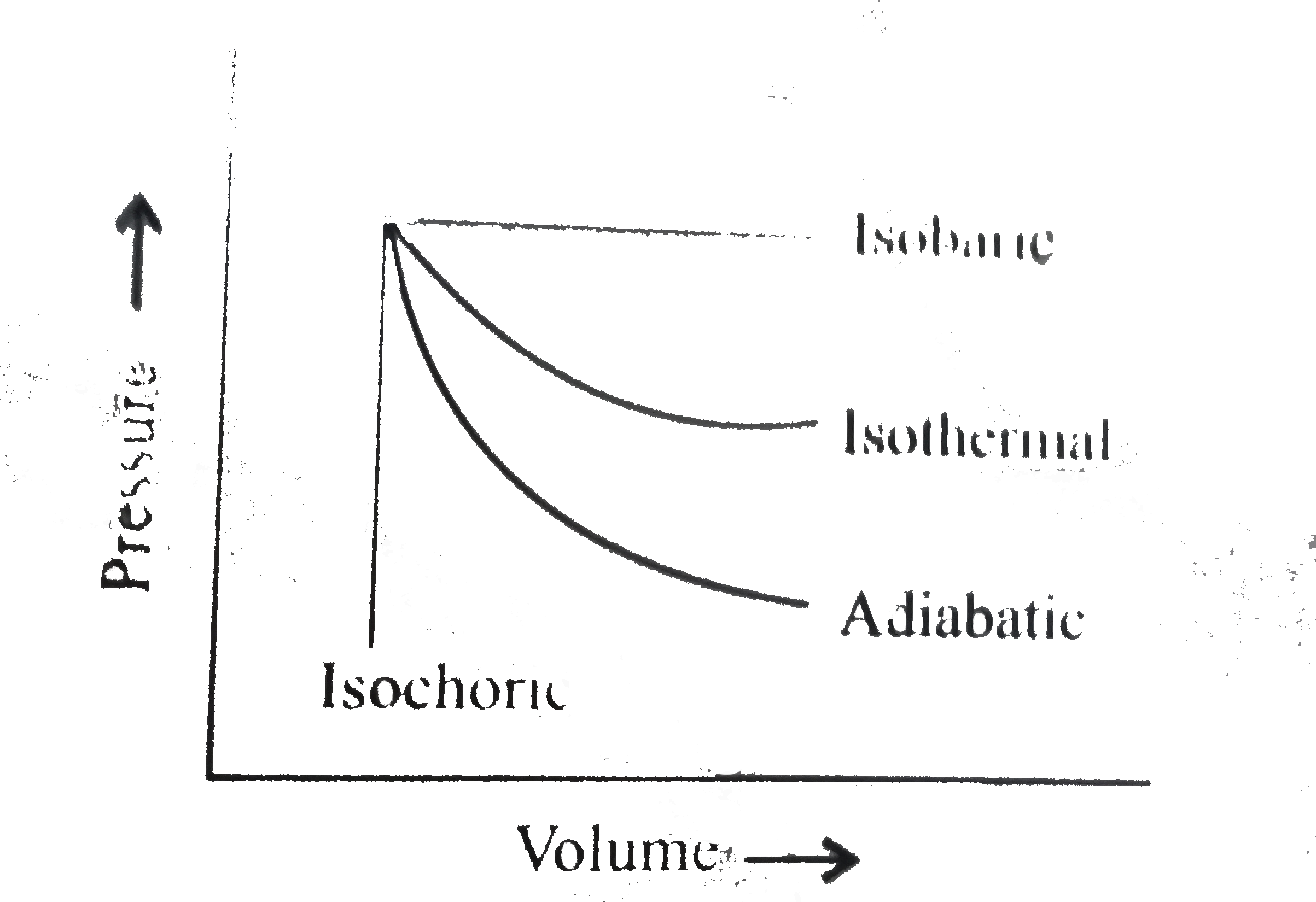Calculate q,w, and ΔU for the isothermal reversible expansion of one mole of an ideal gas from an initial pressure of 2.0 bar to a final pressure of 0.2 bar at a constant temperature of 273K.
To calculate q, w, and ΔU for the isothermal reversible expansion of one mole of an ideal gas from an initial pressure of 2.0bar to a final pressure of 0.2bar at a constant temperature of 273K, we can follow these steps:
Step 1: Understand the Process
Since the process is isothermal (constant temperature), we know that the change in internal energy (ΔU) for an ideal gas is zero.
ΔU=0
Step 2: Use the First Law of Thermodynamics
The first law of thermodynamics states:
ΔU=q+w
Since ΔU=0:
0=q+w⟹q=−w
Step 3: Calculate the Work Done (w)
For an isothermal reversible expansion, the work done on/by the gas can be calculated using the formula:
w=−nRTln(P1P2)
Where:
- n=1mole
- R=8.314J/(mol K)
- T=273K
- P1=2.0bar
- P2=0.2bar
First, convert the pressures from bar to pascals (since 1bar=105Pa):
- P1=2.0×105Pa
- P2=0.2×105Pa
Now substitute the values into the work formula:
w=−1×8.314×273ln(2.00.2)
Calculating ln(2.00.2)=ln(10)≈2.3025:
w=−1×8.314×273×2.3025
Calculating this gives:
w≈−5,225.98J≈−5.226kJ
Step 4: Calculate the Heat (q)
Using the relationship q=−w:
q=−(−5.226)kJ=5.226kJ
Step 5: Summarize the Results
- ΔU=0kJ
- w=−5.226kJ
- q=5.226kJ
Final Answers:
- q=5.226kJ
- w=−5.226kJ
- ΔU=0kJ
Since the process is isothermal (constant temperature), we know that the change in internal energy (ΔU) for an ideal gas is zero.
The first law of thermodynamics states:
For an isothermal reversible expansion, the work done on/by the gas can be calculated using the formula:
- n=1mole
- R=8.314J/(mol K)
- T=273K
- P1=2.0bar
- P2=0.2bar
- P1=2.0×105Pa
- P2=0.2×105Pa
Using the relationship q=−w:
- ΔU=0kJ
- w=−5.226kJ
- q=5.226kJ
- q=5.226kJ
- w=−5.226kJ
- ΔU=0kJ
Topper's Solved these Questions
- THERMODYNAMICSBOOK - CENGAGE CHEMISTRY ENGLISHCHAPTER - THERMODYNAMICSEXERCISE - Exercise
1 Videos
- THERMODYNAMICSBOOK - CENGAGE CHEMISTRY ENGLISHCHAPTER - THERMODYNAMICSEXERCISE - Ex 6.1
26 Videos
- STOICHIOMETRYBOOK - CENGAGE CHEMISTRY ENGLISHCHAPTER - STOICHIOMETRYEXERCISE - Archives Subjective
33 Videos
Similar Questions
Calculate q,w,ΔU, and ΔH for this isothermal reversible expansion of 1mole of an ideal gas from an initial pressure of 1.0 bar to final pressure of 0.1bar at a constant pressure of 273K.
View SolutionThe pressure-volume of varies thermodynamic process is shown in graphs:

Work is the mole of transference of energy. It has been observed that reversible work done by the system is the maximum obtainable work.
wrev>wirr
The works of isothermal and adiabatic processes are different from each other.
wisothermal reversible=2.303nRTlog10(V2V1)
=2.303nRTlog10(P2P1)
wadiabatic reversible=CV(T1−T2)
The q value and work done in isothermal reversible expansion of one mole of an ideal gas from initial pressure of 1 bar to final pressure of 0.1 bar at constant temperature 273K are:
View Solution1 mole of an ideal gas is expanded from an initial pressure of 1 bar to final pressure of 0.1 bar at constant temperature of 273 K. Predict which of the following is not true?
View SolutionCalculate the work done during isothermal reversible expansion expansion of one mol of an ideal gas from 10 atm to 1 atm at 300K.
View SolutionCalculate the work done during isothermal reversible expansion expansion of one mol of an ideal gas from 10 atm to 1 atm at 300K.
View SolutionWork done during isothermal expansion of one mole of an ideal gas from 10 atm to 1atm at 300 k is
View SolutionCalcualte q,w,ΔU, and ΔH for the reversible isothermal expansion of one mole of an ideal gas at 127∘C from a volume of 20dm3 to 40dm3.
View SolutionCalculate the work done when 1 mol of an ideal gas is compressed reversibly from 1 bar to 4 bar at a constant temperature of 300 K
View SolutionFor the reversible isothermal expansion of one mole of an ideal gas at 300 K, from a volume of 10dm3 to 20dm3,ΔH is -
View SolutionWork done during isothermal expansion of one mole of an ideal gas form 10atm to 1atm at 300K is (Gas constant=2)
View Solution
